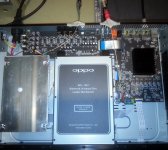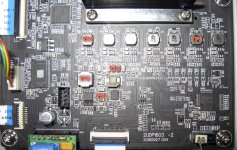Quick update: I recently ordered one of Jae Hong's new linear power modules for my Oppo 203. It's only been installed for about a week, but so far video looks very good, and audio has tightened up quite a bit, especially in the low-end which is noticeably more articulate now.
Installation was very straight-forward. The PCB snaps down perfectly over the stock riser posts, and the cables attach without too much trouble. Fwiw, I measured the mounting holes at 145mm x 90mm, center-to-center. When placed next to the stock module, it's identical in size and spacing.
Installation was very straight-forward. The PCB snaps down perfectly over the stock riser posts, and the cables attach without too much trouble. Fwiw, I measured the mounting holes at 145mm x 90mm, center-to-center. When placed next to the stock module, it's identical in size and spacing.
An externally hosted image should be here but it was not working when we last tested it.
An externally hosted image should be here but it was not working when we last tested it.
... It will be interesting to see how Oppo use the 9038 chipset in the new Sonica dac. Will it have linear regulators, fast recovery snubbed diode bridges, discrete IV and output buffer, better clock, will Batman save Robin this time, stay tuned my friends...........
My Sonica Dac came on Wednesday. Oppo traditions continue! DAC channel allocations - separate ones for balanced and single-ended outputs. A pair of DF02S SMT bridges are used. I/V and (SE) buffers use LM4562 and balanced out use LME49724 for buffering. Regulators include LM2940-12 and 7912, AZ1117, and a hard to read AD part for a pair of op amp based regulators for Vanalog, similar to the reference ESS design.
The ADA specs are not given by Oppo. Wouldn't look good with the PCM1808.
Electrolytic capacitors are almost all Elna "for audio", including the AC coupling ones on DAC outputs and ADC inputs, without film bypasses. Power supply ones all seem to have small ceramic bypasses.
I'm working on taking some high-res photos.
My Sonica Dac came on Wednesday. Oppo traditions continue! DAC channel allocations - separate ones for balanced and single-ended outputs. A pair of DF02S SMT bridges are used. I/V and (SE) buffers use LM4562 and balanced out use LME49724 for buffering. Regulators include LM2940-12 and 7912, AZ1117, and a hard to read AD part for a pair of op amp based regulators for Vanalog, similar to the reference ESS design.
The ADA specs are not given by Oppo. Wouldn't look good with the PCM1808.
Electrolytic capacitors are almost all Elna "for audio", including the AC coupling ones on DAC outputs and ADC inputs, without film bypasses. Power supply ones all seem to have small ceramic bypasses.
I'm working on taking some high-res photos.
Much appreciated your informations about Sonica DAC. This last Oppo DAC it is a strong candidate to improvements (talking about Oppo tradition...).
Looking forward to see some close up pictures. BTW, we have a dedicated thread to Sonica DAC here:
http://www.diyaudio.com/forums/digital-line-level/301507-oppo-sonica-dac-2.html
It could be nice if you will want to publish and comment further about Sonica DAC into its dedicated thread, as here we may keep the topic on Oppo UDP 203/205 players.
Finally I got in my hands an 203 model. The goal is to install my LPM into it and do some other modifications/improvements...
First, my impressions, are (as also of the rest of the users of this Opo last player model) quite good. The picture (I tested it on a HD monitor) is just excellent (far better than on old models), as the sound also very good in respect to the AKM DAC used in this device. The new generation main processor it have an obvious impact for quality increasing (also expected...)
I would like to point here on something when about the sound quality for this device as for the older ones. The last firmware Oppo issued for the old models as for the new ones, it seems to include an improvement for sound stage. There is improvement in dynamics as for overall quality of the outputted audio signal. They did something about the digital processing in this respect. After installing the new firmware version on an old model as on this 203 one, I noticed quite dramatic improvement for sound on both player generations.
I had also so the opportunity now to measure the power rails of the 203 device, so as it is with Oppo`s SMPS in place. The results you can see it hereby.
Some other comments about this 203 model:
The heatsink for main processor it is soldered now on board and is grounded. It seems to me that Oppo designers may read this thread here... Well, nothing wrong with that... .
.
The new generation processor it do the whole job now, as no any dedicated video processors are used beside the main processor.
There is a little bit more difficult to take out the main board from this model, as the board is connected to the WiFi antennas on the side of the chassis. Well this antennes it can be disconnected, but they cover it the connectors with some silicone to make difficult the disconnection, and at least there is not recommended such connecting/disconnecting operations on these connectors, as their performances get worse. So, one should keep in place the wifi antennes connectors and remove the whole plastic part with the antennes on it, if the main board should be removed from its place.
I suggest hereby a procedure for a such removal operation. Please take a look at the pictures.
Now I will start to assembly my new LPM version for these new Oppo players models, and I may come back soon with more details about the improvement process as about the the results...
First, my impressions, are (as also of the rest of the users of this Opo last player model) quite good. The picture (I tested it on a HD monitor) is just excellent (far better than on old models), as the sound also very good in respect to the AKM DAC used in this device. The new generation main processor it have an obvious impact for quality increasing (also expected...)
I would like to point here on something when about the sound quality for this device as for the older ones. The last firmware Oppo issued for the old models as for the new ones, it seems to include an improvement for sound stage. There is improvement in dynamics as for overall quality of the outputted audio signal. They did something about the digital processing in this respect. After installing the new firmware version on an old model as on this 203 one, I noticed quite dramatic improvement for sound on both player generations.
I had also so the opportunity now to measure the power rails of the 203 device, so as it is with Oppo`s SMPS in place. The results you can see it hereby.
Some other comments about this 203 model:
The heatsink for main processor it is soldered now on board and is grounded. It seems to me that Oppo designers may read this thread here... Well, nothing wrong with that...
The new generation processor it do the whole job now, as no any dedicated video processors are used beside the main processor.
There is a little bit more difficult to take out the main board from this model, as the board is connected to the WiFi antennas on the side of the chassis. Well this antennes it can be disconnected, but they cover it the connectors with some silicone to make difficult the disconnection, and at least there is not recommended such connecting/disconnecting operations on these connectors, as their performances get worse. So, one should keep in place the wifi antennes connectors and remove the whole plastic part with the antennes on it, if the main board should be removed from its place.
I suggest hereby a procedure for a such removal operation. Please take a look at the pictures.
Now I will start to assembly my new LPM version for these new Oppo players models, and I may come back soon with more details about the improvement process as about the the results...
Attachments
-
 12vRail-Current probe.jpg553.8 KB · Views: 799
12vRail-Current probe.jpg553.8 KB · Views: 799 -
 Power rails 203 - voltage probe.jpg487 KB · Views: 738
Power rails 203 - voltage probe.jpg487 KB · Views: 738 -
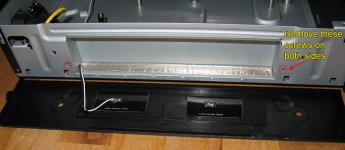 WiFiAntennesRemoval1.jpg449.3 KB · Views: 718
WiFiAntennesRemoval1.jpg449.3 KB · Views: 718 -
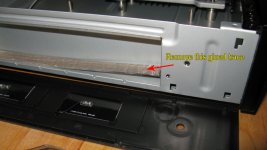 WiFiAntennesRemoval2.jpg433.7 KB · Views: 264
WiFiAntennesRemoval2.jpg433.7 KB · Views: 264 -
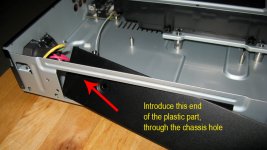 WiFiAntennesRemoval3.jpg502.2 KB · Views: 281
WiFiAntennesRemoval3.jpg502.2 KB · Views: 281 -
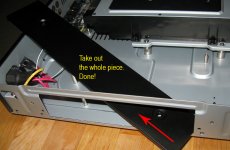 WiFiAntennesRemoval4.jpg613.9 KB · Views: 294
WiFiAntennesRemoval4.jpg613.9 KB · Views: 294 -
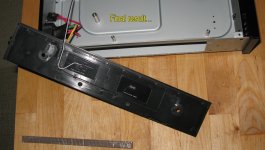 WiFiAntennesRemoval5.jpg564.7 KB · Views: 278
WiFiAntennesRemoval5.jpg564.7 KB · Views: 278
Last edited:
Hi Coris
Nice pics. When you get under the main digital board where the 27MHz Xtal is, could you take a pic there. Just curious. That will be the same for the '205 coming out.
Edit: OOPS! Just realised/forgot Jae had already posted pic.
But it's hard to see where the location is, as it is a closeup. A larger less closeup would be nice.
Re the '203 using AKM 32bit DAC, this is a really good step-up for Oppo to do. I wonder how good the inbuilt volume control is compared to the one ESS uses in Sabre DACs, which to me is the best. Is the AKM VC also really good? Anybody here who has better knowledge of AKM 32 bit DACs, have they got an opinion on this too, please chime in.
Cheers, Joe
Nice pics. When you get under the main digital board where the 27MHz Xtal is, could you take a pic there. Just curious. That will be the same for the '205 coming out.
Edit: OOPS! Just realised/forgot Jae had already posted pic.
But it's hard to see where the location is, as it is a closeup. A larger less closeup would be nice.
Re the '203 using AKM 32bit DAC, this is a really good step-up for Oppo to do. I wonder how good the inbuilt volume control is compared to the one ESS uses in Sabre DACs, which to me is the best. Is the AKM VC also really good? Anybody here who has better knowledge of AKM 32 bit DACs, have they got an opinion on this too, please chime in.
Cheers, Joe
Last edited:
Hi Joe
I will however take some close up pictures of the down side of the board. I focus now on the LPM section, to get it assembled and installed.
Initially I thought one should find a way to connect to the processor clock from up side. This is very difficult also, while the heatsink of the processor is soldered on PCB. So, it will be further actual the clock connection on downside (as Jae did already).
Else, I still appreciate as far better the ESS DAC than the AKM one. Why you may think it is a good step forward for Oppo in using this quite cheap DAC? They did it so for this lite version of their HDR players, but Oppo still use the new ESS DAC in 205 model, and in Sonica DAC as well (which is a good thing in my opinion...)
However, the audio section of 203 it perform quite well (so flooded by the SMPS HF noises), especially after the very last firmware upgrade. I did not tried yet the volume control on AKM DAC. I`m not an adept of digital volume either... I prefer to have it on fixed level... I may take a look anyway...
I also expect a dramatic overall improvement after installing the linear PSU on this device, when one look at the enough high HF noise levels spread out by the SMPS... Especially for audio section the power noises are very important (240mV).
Also a 100mV HF noise induced into the whole digital stage (including clocks) is not a good thing either...
Keep working...
I will however take some close up pictures of the down side of the board. I focus now on the LPM section, to get it assembled and installed.
Initially I thought one should find a way to connect to the processor clock from up side. This is very difficult also, while the heatsink of the processor is soldered on PCB. So, it will be further actual the clock connection on downside (as Jae did already).
Else, I still appreciate as far better the ESS DAC than the AKM one. Why you may think it is a good step forward for Oppo in using this quite cheap DAC? They did it so for this lite version of their HDR players, but Oppo still use the new ESS DAC in 205 model, and in Sonica DAC as well (which is a good thing in my opinion...)
However, the audio section of 203 it perform quite well (so flooded by the SMPS HF noises), especially after the very last firmware upgrade. I did not tried yet the volume control on AKM DAC. I`m not an adept of digital volume either... I prefer to have it on fixed level... I may take a look anyway...
I also expect a dramatic overall improvement after installing the linear PSU on this device, when one look at the enough high HF noise levels spread out by the SMPS... Especially for audio section the power noises are very important (240mV).
Also a 100mV HF noise induced into the whole digital stage (including clocks) is not a good thing either...
Keep working...
Last edited:
And what's up?
Everybody is just waiting on Oppo Digital to release the '205 and then expect quite a bit of activity here.
Something up (and running) already, while waiting for 205 model...
My LPM new edition, adapted to the new generation Oppo players, UHD203 and UHD205 (and even to Sonica DAC too).
Mainly is about the same concept (very large capacities and double layer caps for filtering), as the old edition, but only improved and redesigned to fit the new smaller dimensions available into the 203/205 chassis, and even fitting into the old models too.
There is on board: main DC regulator for 12v rail, and two regulators for +/-15v rails for audio board. Also an low power adjustable regulator for an optional fan, as an supplementary power rail available for the USB IN stage in the old 105/105D and maybe in the new 205 model too. Also on board two AC main filters, one for the R core transformer, and a second one for the toroïdal transformer dedicated to the analogue stage in 105/105D, and in new coming 205 model.
The new LPM it can be populated both sides, and mounted also with the heat sink upward (203 model dissipating through the upper cover), as the heatsink downside, dissipating through the bottom of the chassis.
The heat dissipation for the new models it is also lower, as the power needed by the new generation digital stage is lower too.
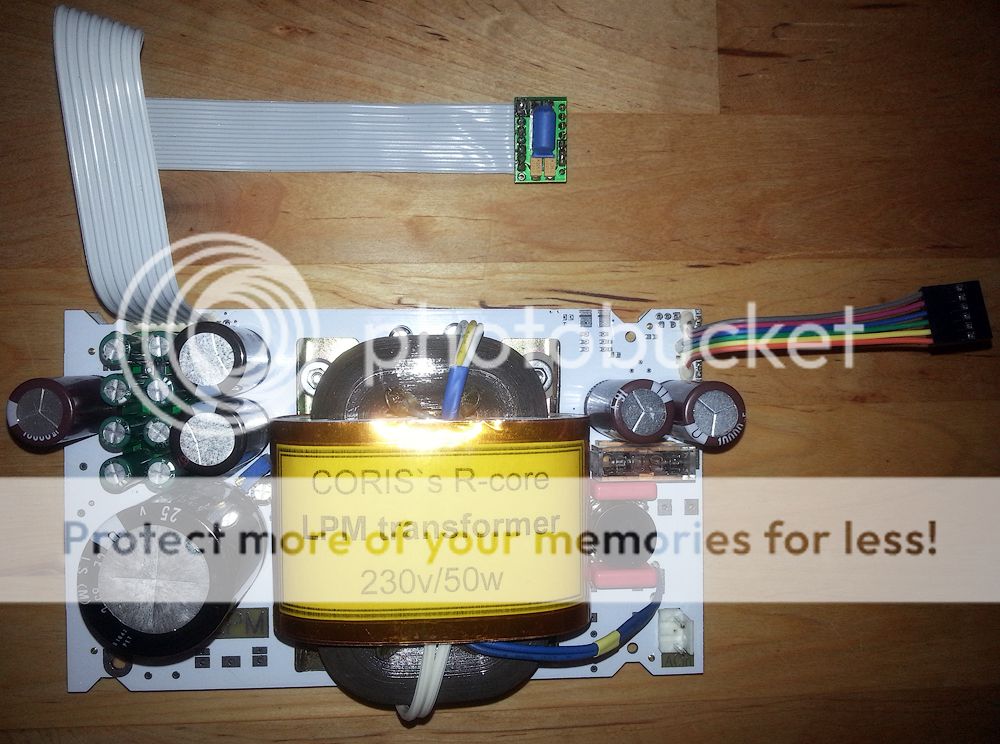
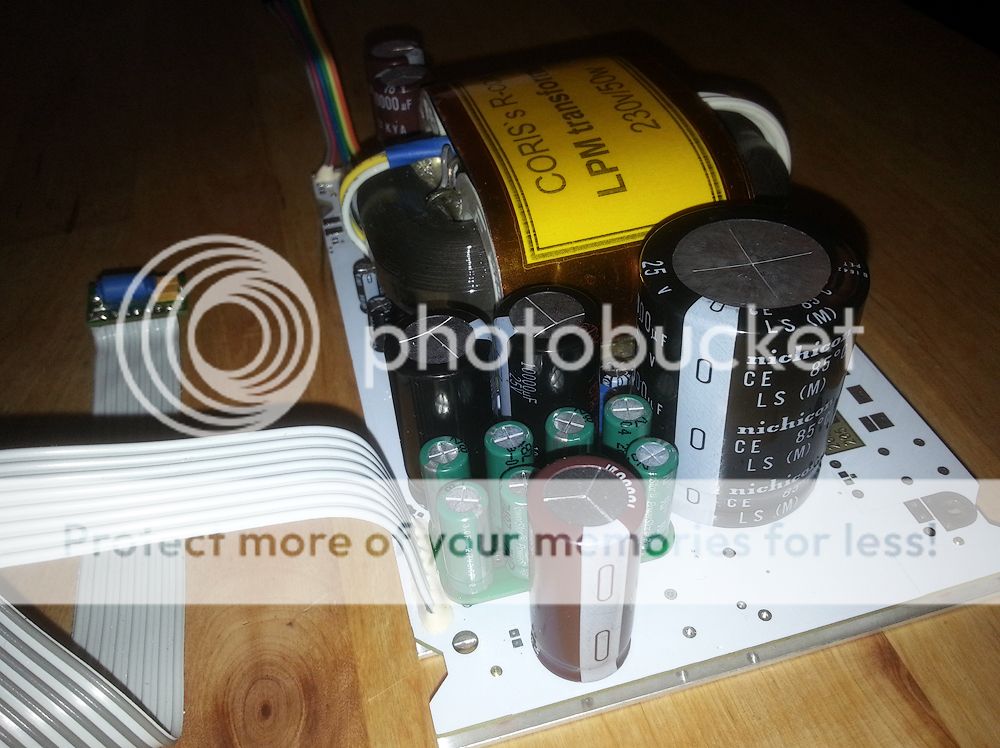
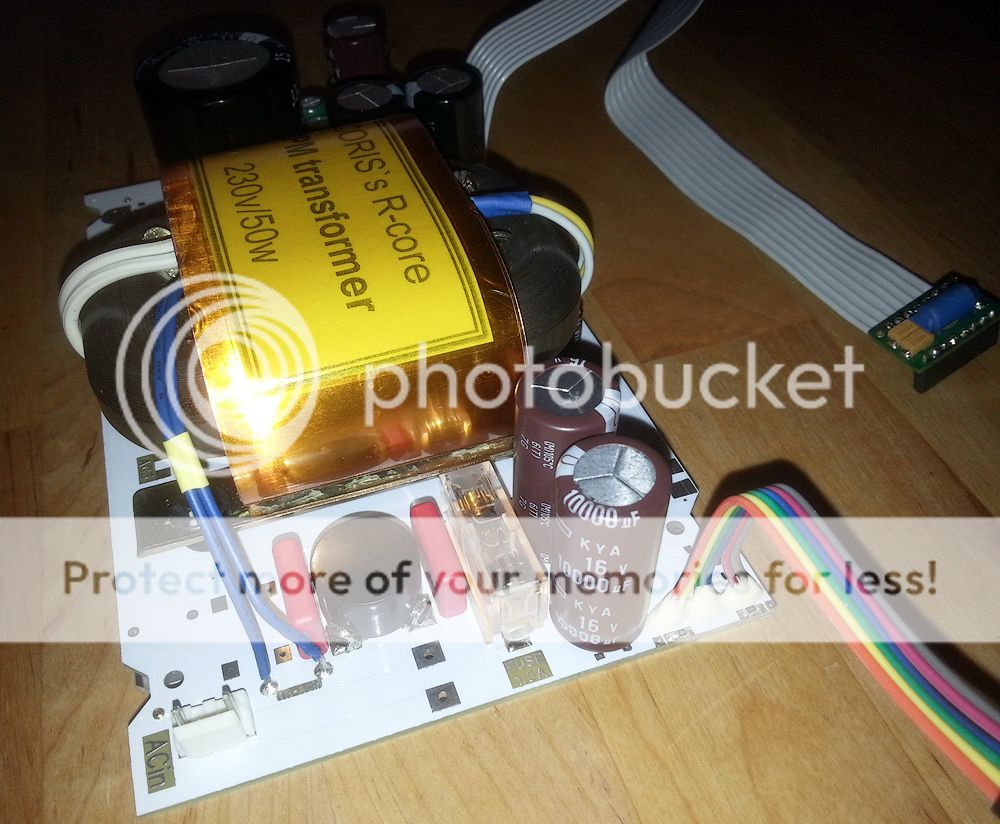

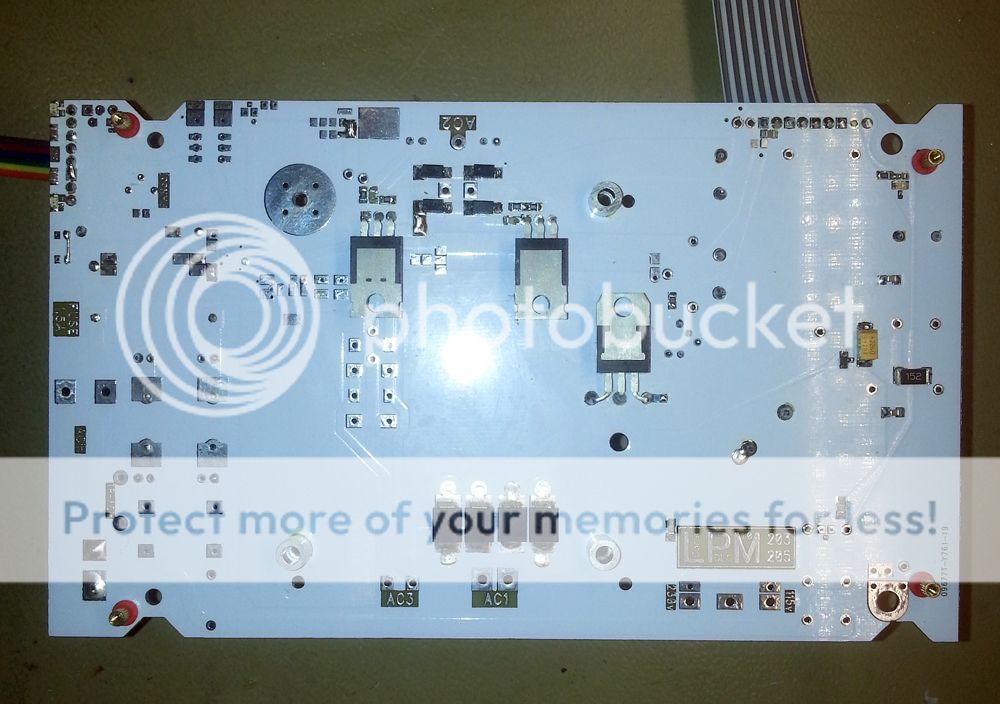
My LPM new edition, adapted to the new generation Oppo players, UHD203 and UHD205 (and even to Sonica DAC too).
Mainly is about the same concept (very large capacities and double layer caps for filtering), as the old edition, but only improved and redesigned to fit the new smaller dimensions available into the 203/205 chassis, and even fitting into the old models too.
There is on board: main DC regulator for 12v rail, and two regulators for +/-15v rails for audio board. Also an low power adjustable regulator for an optional fan, as an supplementary power rail available for the USB IN stage in the old 105/105D and maybe in the new 205 model too. Also on board two AC main filters, one for the R core transformer, and a second one for the toroïdal transformer dedicated to the analogue stage in 105/105D, and in new coming 205 model.
The new LPM it can be populated both sides, and mounted also with the heat sink upward (203 model dissipating through the upper cover), as the heatsink downside, dissipating through the bottom of the chassis.
The heat dissipation for the new models it is also lower, as the power needed by the new generation digital stage is lower too.





Last edited:
I would like to show here comparative measurements taken on a 203 model, powered by its original SMPS, and by a linear PSU )my LPM).
The measurement setup is also shown in the picture hereby.
The measurement setup is also shown in the picture hereby.
Attachments
Could you measure power noise at motherboard regulators?
Your LPM has wonderfull values, congratulations.
But it should be interesting to measure if motherboard's regulators/selfs, when they convert power to lower values, pollute the power and need additionnal filtering.
If it's the case, it would be a good idea to fix it.
I think this is what is doing cinemike in their OPPO 203 tweak (they improve original SMPS AND motherboard in particular areas).
Your LPM has wonderfull values, congratulations.
But it should be interesting to measure if motherboard's regulators/selfs, when they convert power to lower values, pollute the power and need additionnal filtering.
If it's the case, it would be a good idea to fix it.
I think this is what is doing cinemike in their OPPO 203 tweak (they improve original SMPS AND motherboard in particular areas).
Well, now is done. There are here the comparative results of some measurements on the DC/DC converters on main board of a 203 device, powered by the original SMPS and by my LPM.
The results are obvious...
BTW, a quite demanding work I may only say...
The results are obvious...
BTW, a quite demanding work I may only say...
Attachments
Thanks Coris for this Harassing job.
LPM is far better than SMPS but we notice it could be even better if you found a way to improve motherboard regulator's filtering.
The best would be to create a full LPM for all voltages.
Another question: what could be done to filter RJ45 port? We all have plenty of hardwares connected to the network that may pollute network & so OPPO too.
LPM is far better than SMPS but we notice it could be even better if you found a way to improve motherboard regulator's filtering.
The best would be to create a full LPM for all voltages.
Another question: what could be done to filter RJ45 port? We all have plenty of hardwares connected to the network that may pollute network & so OPPO too.
I recently designed and made fully working sample High end stereo DAC board for OPPO UDP 203.
Sabre ESS 9038 pro DAC chip is used.
Features.
1. premium Sabre ESS9038PRO DAC chip
2. best possible op amps: OPA1632 and OPA627
3. unbalanced output with gold plated RCA connector ( optional balanced output is provided)
4. using microprocessor for user favorite selection HF filter
( Dac filter selections are possible through the set up menu in OPPO UDP 2030
5. ground isolation between OPPO main board and 2 channel stereo DAC section with opto coupler
6. 8 of Sabre ESS9038PRO chip data inputs are used all for 2 channel stereo
7. separated clock (TCXO Japan NZ2520SD-80MHz (20 ppm).
8. intensive use of local linear power supply (total 10 )
- separate analog and digital section of DAC chip .
- separate left and right section of DAC chip .
- dedicated power for 80/100 MHz clock
for more info and photos , please visit my blog at Jae H. Lee Blog :: Jae H. Lee Blog



Sabre ESS 9038 pro DAC chip is used.
Features.
1. premium Sabre ESS9038PRO DAC chip
2. best possible op amps: OPA1632 and OPA627
3. unbalanced output with gold plated RCA connector ( optional balanced output is provided)
4. using microprocessor for user favorite selection HF filter
( Dac filter selections are possible through the set up menu in OPPO UDP 2030
5. ground isolation between OPPO main board and 2 channel stereo DAC section with opto coupler
6. 8 of Sabre ESS9038PRO chip data inputs are used all for 2 channel stereo
7. separated clock (TCXO Japan NZ2520SD-80MHz (20 ppm).
8. intensive use of local linear power supply (total 10 )
- separate analog and digital section of DAC chip .
- separate left and right section of DAC chip .
- dedicated power for 80/100 MHz clock
for more info and photos , please visit my blog at Jae H. Lee Blog :: Jae H. Lee Blog



Last edited:
This audio card is impressive. The result may be better than future OPPO105 with DAC 8 channels dedicated to one stereo output.
"Dac filter selections are possible through the set up menu in OPPO UDP 203"
This feature is amazing, do you provide a special OPPO firmware?
"Dac filter selections are possible through the set up menu in OPPO UDP 203"
This feature is amazing, do you provide a special OPPO firmware?
Last edited:
No. I am using normal oppo 203 firmware.
I analyzed the control signal from the main board to DAC board for filter selection.
And I re-mapped to ESS9038pro DAC filter selection.
I analyzed the control signal from the main board to DAC board for filter selection.
And I re-mapped to ESS9038pro DAC filter selection.
This audio card is impressive. The result may be better than future OPPO105 with DAC 8 channels dedicated to one stereo output.
"Dac filter selections are possible through the set up menu in OPPO UDP 203"
This feature is amazing, do you provide a special OPPO firmware?
- Home
- Source & Line
- Digital Source
- Oppo new UDP series players - 203/205 - Discussions, upgrades, modifications



